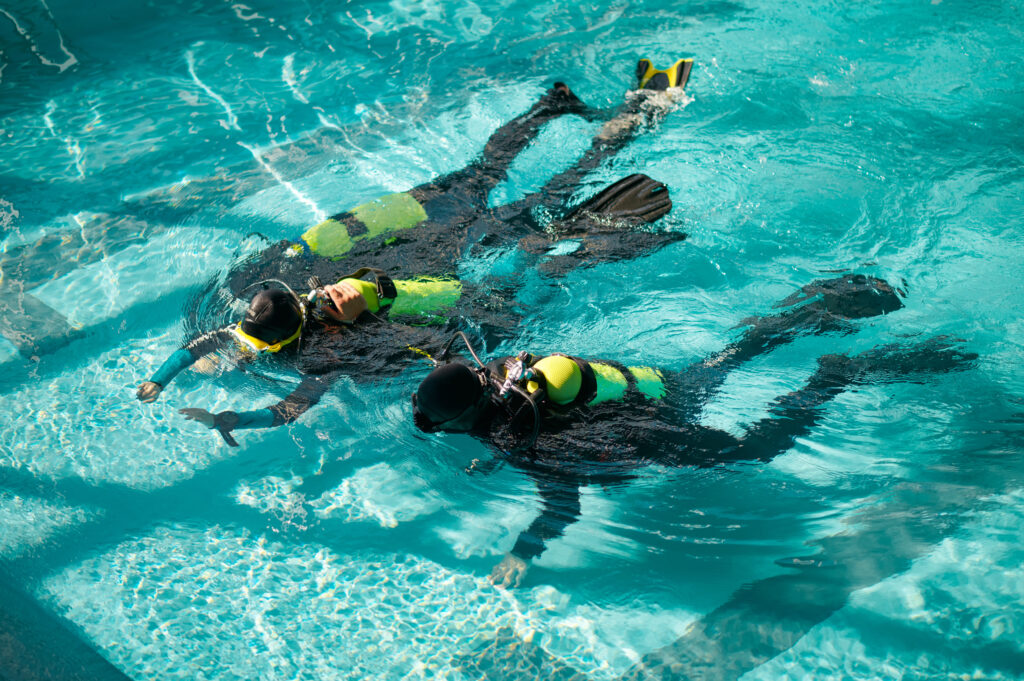What is a Dive Profile?

What is a Dive Profile? A dive profile is a detailed plan that outlines the depth and duration of a scuba dive, including the rates of descent and ascent, and any necessary decompression stops. It is a crucial element in scuba diving that ensures safety by managing the diver’s exposure to pressure changes and the […]
What is a Pushing Tide?

A pushing tide, often referred to as a flood tide, is a natural oceanographic phenomenon where the incoming tide causes seawater to flow toward the shore. This type of tide plays a significant role in coastal environments and activities, particularly in scuba diving. Understanding pushing tides is crucial for divers as it affects both the safety and the overall experience of their underwater ventures. In essence, a pushing tide can significantly influence water conditions, marine life behavior, and the physical landscape of dive sites.
What is “Out of Air”?

In the context of scuba diving, “out of air” refers to a situation where a diver has depleted their air supply, presenting a critical emergency. This term underscores the paramount importance of air management for diver safety. Proper planning, vigilance, and awareness are essential to prevent such incidents, as running out of air underwater can lead to severe consequences, including drowning. Understanding the factors that contribute to air depletion and the measures to prevent and handle such emergencies is crucial for every diver.
What is a Delayed Surface Marker Buoy?

A delayed surface marker buoy (DSMB) is an essential piece of equipment used by scuba divers to enhance safety and communication during their underwater activities. Unlike a standard surface marker buoy (SMB), which is deployed at the beginning of a dive, a DSMB is typically deployed from underwater, often towards the end of the dive. This allows divers to mark their position and signal their ascent to the surface, providing visibility to boats and other watercraft in the vicinity. The DSMB plays a critical role in preventing accidents, ensuring divers are easily located, and facilitating safe and efficient dive operations.
What is a Dropping Tide?

A dropping tide, also known as an ebb tide, refers to the phase when the tide level is receding from high tide to low tide. This process is a crucial aspect of tidal cycles, driven by the gravitational forces of the moon and the sun, affecting the movement of water across coastal areas. Understanding the characteristics and effects of a dropping tide is essential for various maritime activities, particularly scuba diving, as it influences water conditions, marine life behavior, and underwater navigation.
What is Recreational Scuba Diving?

Recreational scuba diving is a popular underwater activity enjoyed by millions of people around the world. It allows individuals to experience the underwater environment firsthand, encountering marine life and underwater landscapes that are typically inaccessible. Unlike commercial or military diving, which focuses on tasks such as underwater construction or defense, recreational scuba diving is primarily for enjoyment and adventure. It involves using a self-contained underwater breathing apparatus (scuba) to breathe underwater, enabling divers to spend extended periods submerged. This activity has grown significantly in popularity due to its appeal to adventurers and nature enthusiasts alike.
What is a Surface Marker Buoy?

What is a Surface Marker Buoy? A Surface Marker Buoy (SMB), also known as a safety sausage or dive sausage, is a critical safety device used by scuba divers to indicate their location to people at the surface. Their usage is widespread in recreational and professional diving, as they provide an essential visual reference for […]
What is a Safety Sausage?

What is a Safety Sausage? The Safety Sausage, colloquially named for its elongated, tubular shape and vivid coloration, is a crucial tool in a diver’s arsenal. Officially known as a Surface Marker Buoy (SMB), it functions as a critical signaling device between divers and surface personnel, ensuring safety and communication in the vast and often […]
What is Upstream in Scuba Diving?

What is Upstream in Scuba Diving? In the realm of scuba diving, “upstream” refers to a direction that goes against the flow or current of a body of water. Upstream swimming is often more challenging due to the added resistance posed by the water’s flow. This term also carries metaphorical implications, suggesting the act of […]
What is Carbon Dioxide (CO2)?

What is Carbon Dioxide (CO2)? Carbon dioxide (CO2) is an odorless, tasteless gas that is a natural byproduct of metabolism. This greenhouse gas plays a crucial role in the Earth’s atmosphere, and it is also an essential factor to consider for scuba divers. Exhaled by the lungs, CO2 is a critical aspect of scuba diving, […]
